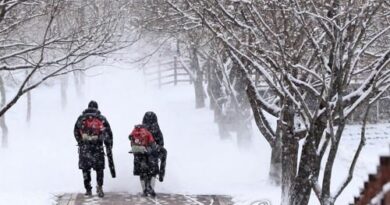Large-Scale Earthquake and Radiation Leak? Nuclear Power Plant Complex Disaster Response Training Conducted

The Nuclear Safety and Security Commission (Chairman Yoo Kook-hee, hereinafter referred to as the NSSC) conducted the “2024 National Radiation Disaster Prevention Joint Training” on the assumption of a radiation leak accident at the Saeul Nuclear Power Plant in Ulju-gun, Ulsan Metropolitan City on the 25th. Approximately 2,300 people from central government agencies, local governments, specialized agencies, business operators, relevant local organizations, and local residents participated in this training.
*Participating organizations: 18 central government ministries including the Nuclear Safety and Security Commission, the Ministry of Public Administration and Security, Ulsan Metropolitan City and 8 basic local governments, Korea Institute of Nuclear Safety, Korea Institute of Radiological Medical Science, etc.
This year’s training was set up to simulate a major accident at Saeul Nuclear Power Plant Unit 2 due to an 8.6 magnitude earthquake off the coast of Ulsan, and the central and regional radiation disaster response headquarters and on-site radiation disaster command centers were operated to conduct field training on evacuation, relief center operation, and environmental radiation surveys to inspect the national integrated response system for radiation disaster prevention.
In particular, this training was conducted in conjunction with the “READY Korea Training” hosted by the Ministry of the Interior and Safety, as a training to prepare for complex disasters such as large-scale earthquakes and radioactive leaks.
Looking at the main training contents by organization, the headquarters of the Nuclear Safety and Security Commission established the Central Radiation Disaster Prevention Headquarters and conducted decision-making training for declaring a radiation disaster and reviewing the designation of a special disaster area.
The Ulsan On-site Radiation Disaster Prevention Command Center of the Atomic Energy Commission conducted training to make decisions to protect residents and oversee on-site accident recovery.
Eight local governments near the Saeul Nuclear Power Plant established regional radiation disaster prevention headquarters and inspected the implementation of resident protection measures.
Ulsan Metropolitan City set up relief stations in two locations, including Ulju Sports Complex, and conducted resident introduction training with the participation of approximately 900 local residents and students. Gyeongsangnam-do (Yangsan City) also set up a relief station in the indoor gymnasium of Yangsan Sports Complex and conducted training with the participation of approximately 400 local residents and students.
The Korea Institute of Nuclear Safety conducted training to use radiation exploration equipment to explore radiation on land, at sea, and in the air, and to synthesize the results to provide information necessary for deciding on measures to protect residents.
The Korea Institute of Radiological and Medical Sciences, in cooperation with Ulsan University Hospital, Gijang Hospital, and the Radiation Health Institute, established an on-site clinic at the Saeul Nuclear Power Plant and conducted training in treating and transporting radiation-injured patients.
Korea Hydro & Nuclear Power focused on on-site training for nuclear power plant accident recovery, including radiation emergency declaration and transmission, emergency power supply, and external cooling water injection.
Commissioner Yoo Gook-hee emphasized, “In order to thoroughly maintain the national radiation disaster prevention system, radiation disaster prevention training similar to real-life situations is necessary,” and said, “Through this training, we checked the cooperative system with relevant organizations to quickly protect residents in the event of a radiation disaster.”
Editor. Hong Se-yeong







